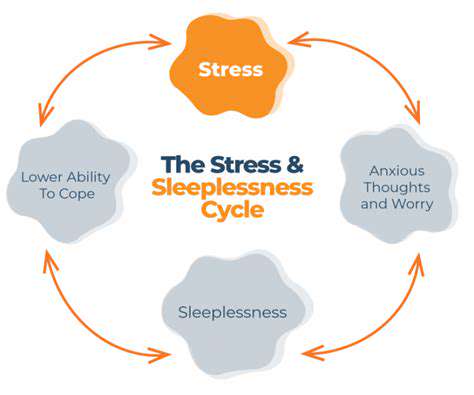Improving Your Sleep Habits for Healthier Rest
Jun 01, 2025 / zsfcdn103/
Optimizing Your Sleep Environment for Restful Nights
Creating a Conducive Sleep Sanctuary
Having a dedicated sleep space is absolutely essential for achieving quality rest. This goes beyond simply owning a bed; it's about designing an environment that tells your body it's time to unwind. The visual elements matter greatly - think warm, dim lighting, soothing color palettes, and perhaps some indoor greenery to cultivate serenity. Eliminating distractions is equally vital. The ideal sleeping area should be dark, silent, and completely free from electronic devices to encourage deep, uninterrupted sleep.
Temperature plays a critical role too. Research shows most people sleep best in slightly cool conditions, typically between 60 and 67 degrees Fahrenheit. Don't underestimate the impact of quality bedding either - premium sheets paired with a mattress that properly supports your body can dramatically improve both comfort and sleep quality.
Controlling Light and Noise Pollution
Both light and sound can wreak havoc on sleep patterns. For light control, blackout curtains or a comfortable sleep mask can block disruptive illumination, as even minimal light exposure can suppress melatonin production. Sound disturbances present another common challenge. Simple solutions like earplugs or white noise generators can effectively mask unwanted noises.
For those particularly sensitive to sound, consider adding sound-absorbing elements to your bedroom. Plush rugs, heavy drapes, or upholstered furniture can help dampen noise transmission, creating a more consistently peaceful sleeping environment.
Optimizing Your Bedding for Comfort
Your choice of bedding significantly impacts sleep quality. The right mattress should support your body's natural alignment to prevent discomfort during the night. Firmness preference varies by individual - some prefer plush surfaces while others need firmer support based on their body type and sleeping position.
Bedding materials matter too. Look for breathable, moisture-wicking fabrics that help regulate temperature throughout the night. Those with allergies should consider hypoallergenic options to minimize potential irritants that could disrupt sleep.
Establishing a Consistent Sleep Schedule
Maintaining regular sleep and wake times - even on weekends - helps synchronize your body's internal clock. This circadian rhythm alignment makes falling asleep and waking up feel more natural over time. While it might be tempting to sleep in on days off, sticking to your usual schedule typically yields better long-term sleep results.
Creating a Relaxing Pre-Sleep Routine
Developing calming evening rituals signals your brain that it's time to power down. This might include a warm bath, light reading, or gentle yoga stretches. Avoid stimulating activities in the hour before bed, particularly screen time or work-related tasks, as these can activate your mind when it should be winding down.
That final hour before sleep is crucial. Replacing digital stimulation with quiet, relaxing activities helps transition both mind and body into sleep mode more effectively. Many find this simple change makes a noticeable difference in how quickly they fall asleep and how rested they feel in the morning.
There's something undeniably inviting about the farmhouse aesthetic. This design style beautifully merges the warmth of rustic charm with contemporary functionality. Imagine aged wooden ceiling beams paired with a vintage-inspired sink, complemented by reclaimed wood surfaces that add character. Yet these traditional elements blend seamlessly with modern conveniences and streamlined designs.
